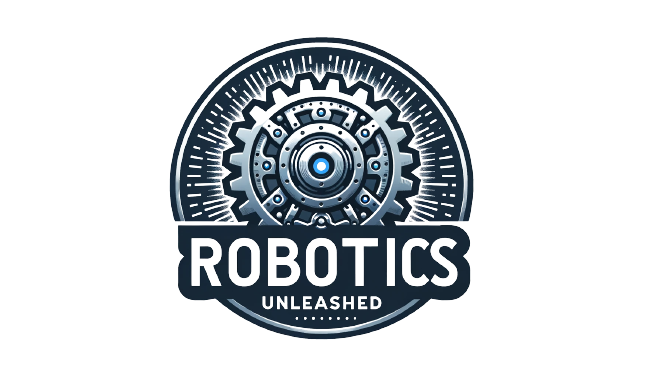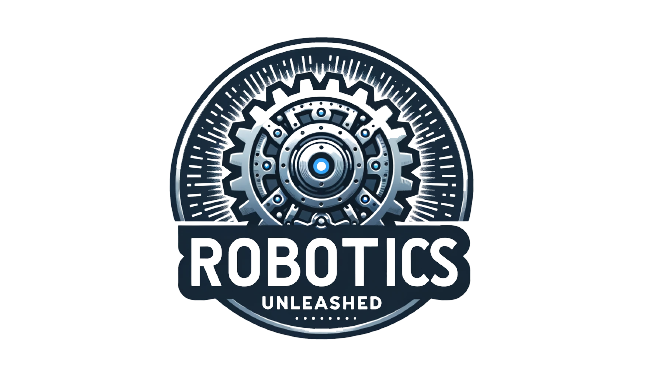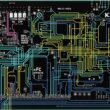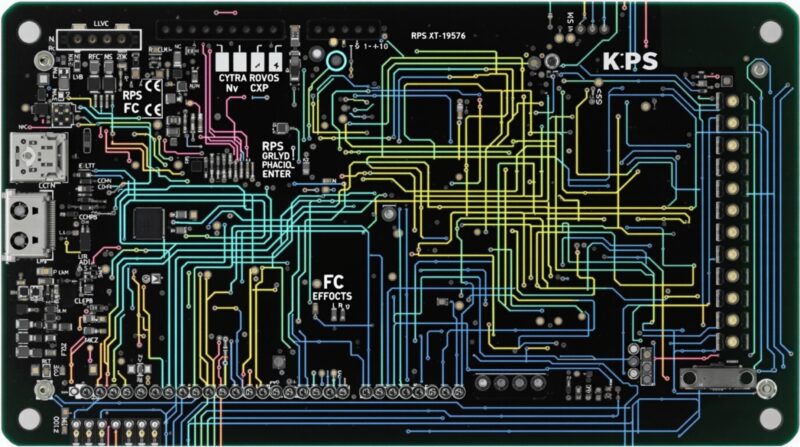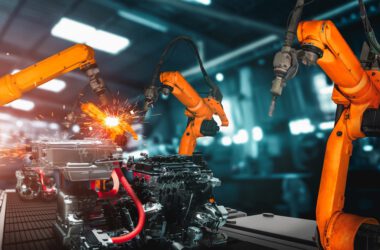Motor controllers serve as the operational hub of robotic systems, enabling precise motion control and optimizing energy efficiency across applications from consumer gadgets to industrial automation. The market for these essential components continues to grow rapidly, with motor driver ICs reaching $12.08 billion in 2023 and the robot control system market projected to hit $19.9 billion by 2033.
Key Takeaways
- A well-designed motor controller board enables bidirectional operation and precise speed control through PWM technology
- The market is dominated by specialized controllers for brushed and brushless motors, each offering unique advantages for specific robotics applications
- Modern dc motor controller systems incorporate feedback mechanisms that can reduce positional errors by up to 95%
- When selecting a controller, engineers must consider voltage requirements, current ratings, and environmental factors
- Emerging trends include AI integration and energy-efficient regenerative braking that can recapture up to 15% of kinetic energy
Understanding Motor Controllers in Robotics
At the heart of every robot’s movement capability is the motor controller. These electronic devices regulate the amount of power delivered to motors, allowing for precise control over speed, direction, and torque. The importance of these components can’t be overstated—they transform simple electrical signals from a microcontroller or computer into the physical movement that makes robots functional.
Modern robotics applications demand increasingly sophisticated control systems. Whether it’s a delivery robot navigating a warehouse floor or a robotic arm performing delicate assembly tasks in industrial manufacturing environments, the precision of movement directly depends on the quality of the motor controller.
Motor controllers come in various forms depending on the application requirements. The simplest might be basic H-bridge circuits that control direction, while advanced controllers incorporate complex feedback mechanisms and communicate via sophisticated protocols like CAN bus or EtherCAT.
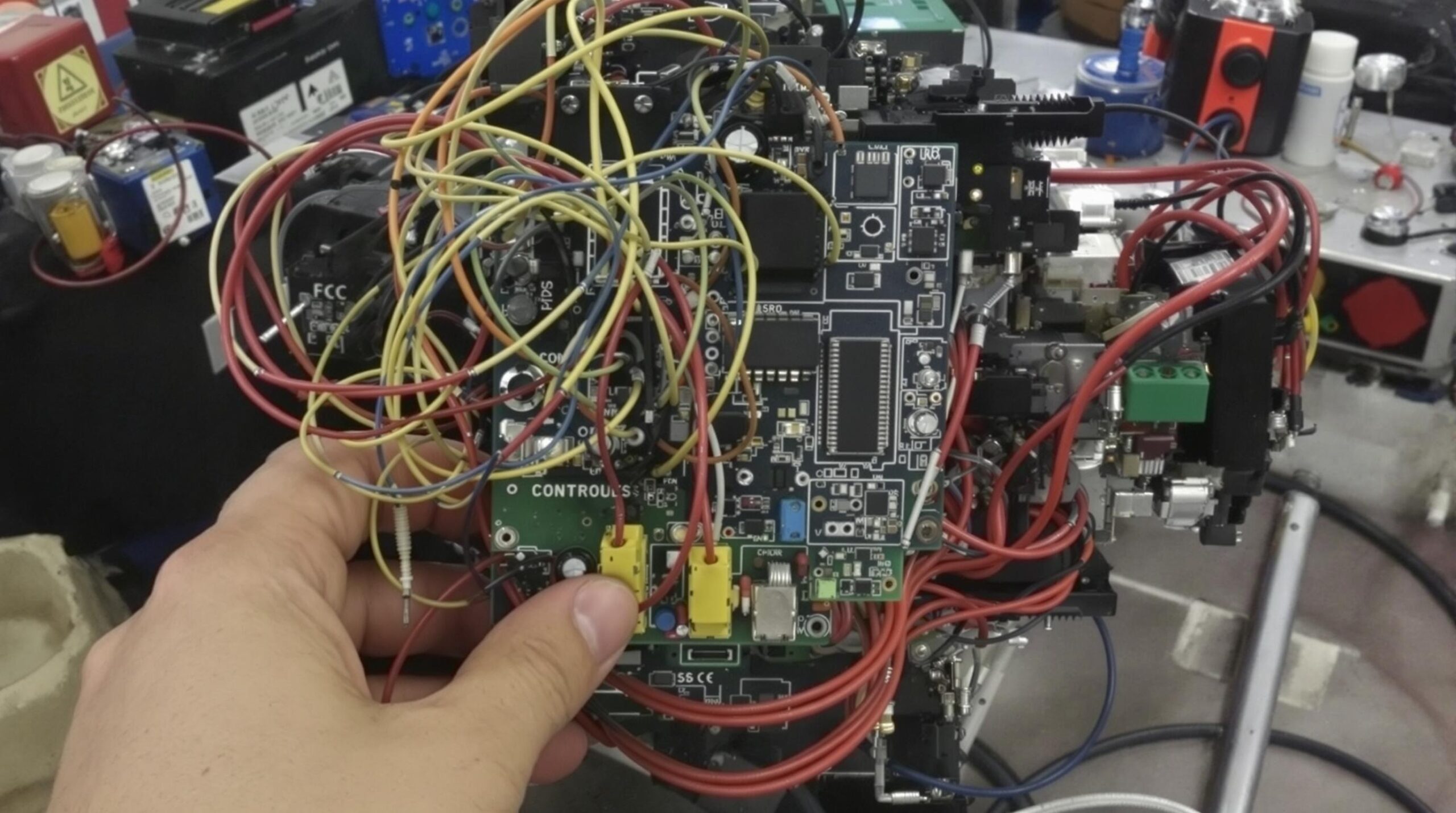
Types of Motor Controllers and Their Applications
The robotics industry relies on several distinct types of motor controllers, each designed to address specific needs and motor technologies. Understanding these categories is essential for selecting the right dc motor controller for your project.
Brushed DC controllers represent the most straightforward option for many applications. Products like the Sabertooth 2x60A support dual motors with 60A continuous current, making them ideal for heavy-duty robots weighing up to 450 kg. The Victor SPX offers features like CAN/PWM compatibility with highly adjustable deadbands (0.1-25%) for precise control in competitive robotics.
For applications requiring higher efficiency, brushless DC controllers like the Roboteq SBL 2360 operate in both sinusoidal and trapezoidal modes, supporting sensorless configurations for reduced complexity. The Talon SRX integrates Hall-effect sensors and can handle peak currents up to 100A, making it suitable for high-performance humanoid robotics.
Smart controllers represent the cutting edge of motor control technology:
- Hiwonder ROS Board with STM32F407VET6 chip processing encoder data at 168 MHz
- Soft Robotics Toolkit Board offering open-source pneumatic control for flexible actuators
- Dimension Engineering Kangaroo with built-in motion profiling capabilities
- Pixl board for interfacing with Dynamixel smart servos in educational platforms
Core Components and Working Principles
To understand how a motor controller board functions, let’s examine its fundamental components. The H-Bridge circuit serves as the cornerstone of most controllers, enabling bidirectional motor control through selective transistor activation. This simple yet effective arrangement allows current to flow in either direction through the motor, creating forward or reverse rotation.
Pulse-Width Modulation (PWM) technology provides the means to adjust motor speed with precision. By varying the duty cycle of the signal, controllers like the Victor SPX can operate at frequencies up to 15 kHz, providing smooth motor operation with minimal audible noise.
Feedback mechanisms dramatically improve performance in advanced systems. Encoders, IMUs, and pressure sensors enable closed-loop control that can reduce positional errors by up to 95%. This is particularly crucial in AI-powered robotics where precision determines success.
Communication protocols determine how motor controllers interact with the broader system. The most common include:
- CAN bus – for robust, noise-resistant networking of multiple controllers
- PWM – simplest method using pulse width to indicate desired speed
- USB/UART – for direct computer control and programming
- I2C/SPI – for integration with sensors and other peripherals
According to industry data, approximately 60% of robotic systems use PID (Proportional-Integral-Derivative) controllers for precision torque regulation, highlighting their importance in modern motor control strategies.
Critical Technical Specifications
When evaluating motor controllers for a project, several key specifications determine their suitability. Voltage and current ratings stand as primary selection criteria. Industrial controllers like the SyRen 50 can handle 100A surge currents, while voltage ranges typically span from 6V to 48V depending on the application requirements.
Control algorithms significantly impact performance. Field-Oriented Control (FOC) implemented in premium controllers like Renesas ICs enables full torque at zero speed—a critical feature for precision positioning tasks and smooth starts under load.
Thermal management capabilities directly affect reliability and longevity. Modern controllers incorporate overcurrent and overvoltage protection that can reduce failure rates by up to 30%, particularly important in controllers like the Hiwonder boards that operate in compact spaces with limited cooling.
The following comparison illustrates key differences between popular controllers:
- Sabertooth 2×32: 6-16V operating range, 64A peak current, with regenerative braking
- SyRen 50: 6-28V range, impressive 100A peak current, four distinct operating modes
- SPARK Flex: 6-24V compatibility, 80A surge capacity, with brushless motor support
Design Considerations for Selecting Controllers
Choosing the right motor controller requires careful analysis of power requirements. Small robotic projects typically operate on 5-12V systems, while industrial AGVs and heavy machinery demand 24-48V for adequate torque and efficiency. Underestimating power needs leads to poor performance and potential controller damage.
Environmental factors play a crucial role in controller selection. For robots operating outdoors or in harsh conditions, IP67-rated controllers like the SyRen 25A offer protection against humidity and dust, ensuring reliable operation in challenging environments.
Cost considerations cannot be overlooked. Basic H-Bridge drivers like the L298N cost just $5-$10, making them accessible for hobbyists and educational projects. In contrast, advanced CAN-enabled controllers such as the Talon SRX exceed $150 but offer features that justify the investment for competitive and professional applications.
Compatibility with existing systems often determines the final choice. Data shows that 78% of FIRST Robotics Competition teams use CAN-enabled controllers for their reduced wiring complexity and improved diagnostic capabilities.
Leading Manufacturers and Product Innovations
The motor controller market features several standout manufacturers pushing innovation boundaries. Roboteq’s SBL 2360 leads the brushless DC controller segment with its versatile operating modes and robust construction. Hiwonder’s miniROS controller brings ROS (Robot Operating System) compatibility to smaller platforms, while Dimension Engineering’s Kangaroo offers sophisticated motion profiling capabilities.
Manufacturer innovations continue to advance the field. Renesas Electronics has developed programmable ICs specifically for sensorless BLDC motors, while Cross the Road Electronics has implemented deadband adjustment down to an impressive 0.1% precision in their Victor SPX controllers.
Key differentiators between products often lie in specialized features. The Victor SPX’s follow mode enables seamless motor synchronization for multi-motor robots, while Sabertooth’s regenerative braking technology captures kinetic energy during deceleration, improving overall system efficiency.
When evaluating manufacturers, consider:
- Documentation quality and availability
- Support resources and community size
- Firmware update frequency and long-term product support
- Compatibility with popular development platforms
Specialized Controllers for Advanced Applications
Certain robotic applications demand highly specialized motor control solutions. Soft robotics represents one such field, where pneumatic controllers enable delicate object handling in medical and food processing robotics. These controllers precisely regulate air pressure in flexible actuators, allowing for gentle interaction with fragile items.
Underwater robotics presents unique challenges addressed by specialized controllers like the AquaPack Control Board. This system uses IMU feedback for underwater robot stabilization, compensating for currents and buoyancy effects to maintain precise positioning in submerged environments.
Industrial automation relies on PID-controlled servo motors for high-precision manufacturing. Delta robots in packaging lines can achieve 200 picks per minute thanks to sophisticated controllers that coordinate multiple motors with millisecond-level synchronization.
Educational platforms leverage specialized controllers to make robotics accessible to students. The Raspberry Pi-compatible Pixl board simplifies teaching Dynamixel motor programming, while VEX Robotics controllers offer plug-and-play functionality for classroom environments.
Emerging Trends in Motor Control Technology
The integration of artificial intelligence represents one of the most transformative trends in motor control. Smart controllers using machine learning algorithms can predict motor wear patterns, reducing downtime by up to 40% through preventive maintenance notifications.
Energy efficiency has become a primary focus, with regenerative drivers capable of recapturing up to 15% of kinetic energy in electric vehicles and automated guided vehicles. This technology extends battery life and reduces overall power consumption in mobile robotic platforms.
Open-source platforms continue to gain traction, with Arduino-compatible fluidic control boards lowering barriers to soft robotics R&D. These accessible technologies enable smaller teams and educational institutions to explore advanced concepts without prohibitive costs.
Future innovations point toward several key directions:
- Integration with predictive maintenance systems
- Improved energy recapture capabilities
- Miniaturization for smaller, more agile robots
- Enhanced real-time adaptation to changing loads and conditions
